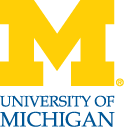

Michael Mosburger
Graduate Student Research Assistant
| Home | Current Research | Previous Research | Publications | Formula SAE |
Previous Research
2006, University of Michigan
Several years ago diesel fuel with very low sulfur content has been mandated in Europe, followed by the U.S. a few years later. However, the sulfur content of diesel fuel can vary greatly in other parts of the world. Due to logistical issues in various theaters of operation, the U.S. Military is often forced to rely on local fuel supplies, which exposes vehicles to diesel fuel or jet fuel (JP-8) with elevated levels of sulfur. Modern engines typically use cooled Exhaust Gas Recirculation (EGR) to reduce the emission of nitric oxides and to meet emissions regulations. Using high-sulfur fuels together with cooled EGR causes tremendous problems associated with heat exchanger fouling and corrosion of engine components. However, it is not obvious whether the cooler fouling is due to exposure to sulfur dioxide (SO2), sulfuric and sulfurous acid, or sulfur containing particles.
Together with a group of researches at The University of Michigan I developed a novel approach to sample and analyze the exhaust of a diesel engine running on high-sulfur JP-8 fuel. In that approach part of the exhaust stream is branched off and routed through an array of heat exchangers, where it is cooled down in different stages to condense SO2 and sulfuric acid, and to trap particles. The condensate can then be analyzed for sulfur content.
2008, Karlsruhe Institute of Technology
Raw emissions from internal combustion engines contains various components (hydrocarbons, carbon monoxide, nitric oxides,...) whose emissions into the environment is limited by law in most countries of the world. Catalytic converters have been used for many years to clean the exhaust in order to fulfill emissions requirements. In recent years the task has been complicated when the government introduced the requirement for passenger cars to fulfill these requirements even after 11 years or 100,000 miles of operation, because catalyst performance generally decreases as the catalyst undergoes aging.
The most common catalytic converter is the so-called Three-Way Catalyst (TWC), which has been on the market for more more than twenty years and is nowadays considered a well-understood standard component. Surprisingly though, up until today the detailed chemical reaction mechanisms are not fully understood. Furthermore, the detailed reaction pathways are so complex that they can hardly be simulated with today's computing resources.
Together with researchers of University of Karlsruhe and a company that works in the field of exhaust gas aftertreatment, I developed a computer model that follows a simplified chemistry with only allowing a very limited number of possible reaction pathways. In spite of large simplifications that were necessary to allow for short processing times, the model parameters can be fitted to predict real world catalyst performance to a high degree of accuracy. A particular feature of this model is that it can also predict the performance of a TWC as it gradually undergoes aging.